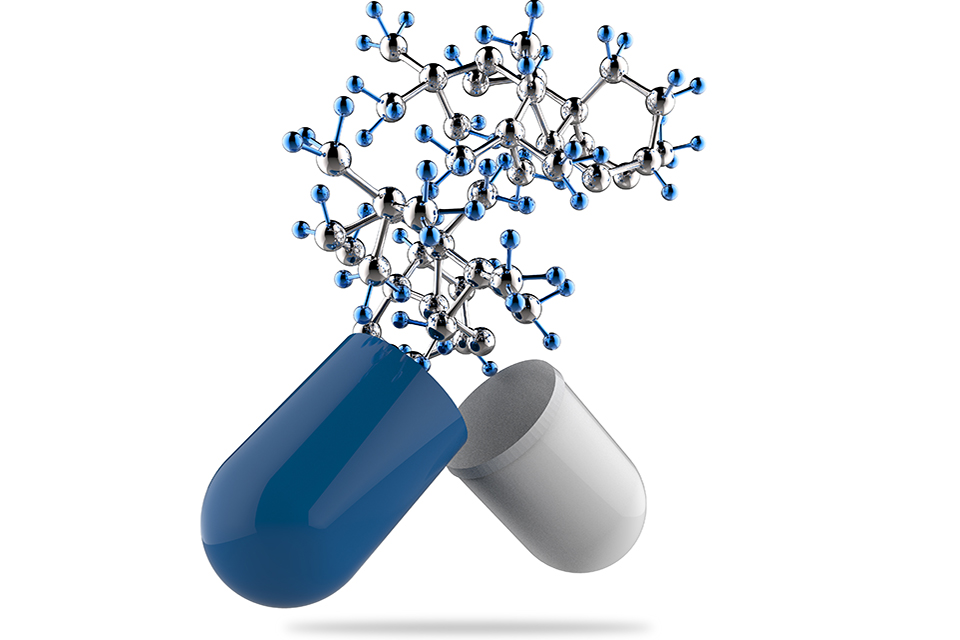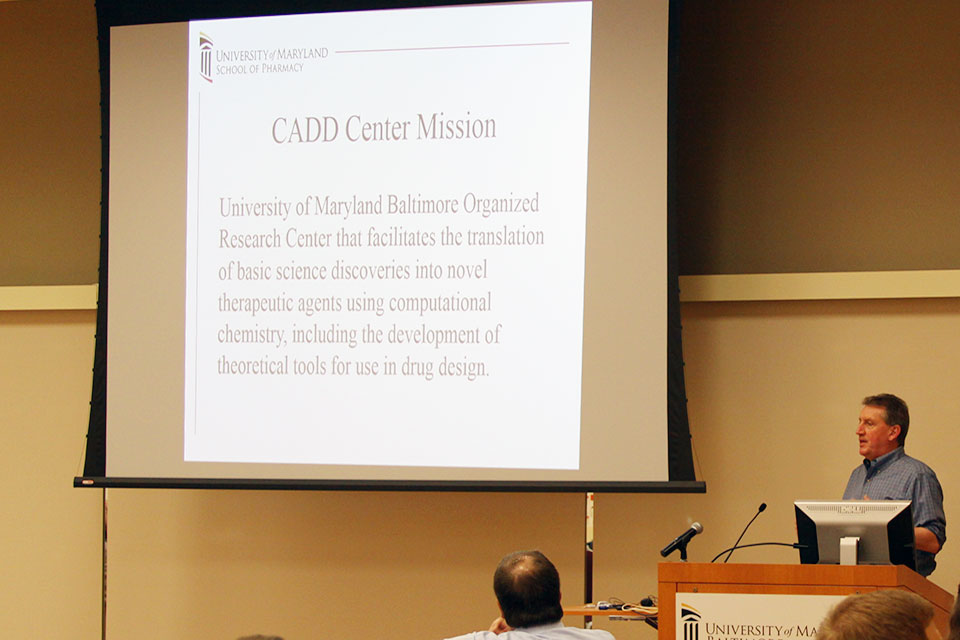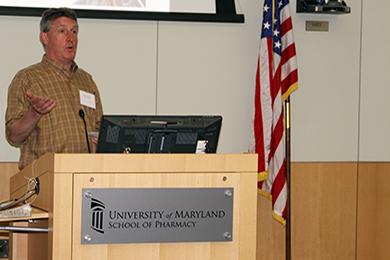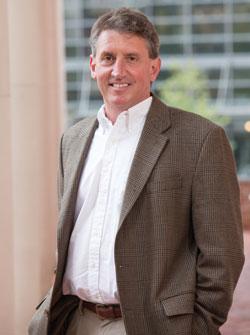Symposium Showcases Latest Advances in Computer-Aided Drug Design
Presentations delivered by leaders across academia and industry highlight new methods and approaches to drug design that attendees can apply in their laboratories.

By Malissa Carroll
June 9, 2016
The University of Maryland School of Pharmacy welcomed researchers from academia, government, and industry to its Computer-Aided Drug Design (CADD) Symposium on May 25. Held at the BioPark Life Sciences Conference Center, the symposium presented recent developments in the fields of computer-aided drug design and discovery, and offered opportunities for researchers across the University System of Maryland and beyond to network and discuss potential collaborations.
“Faculty at the School of Pharmacy take a comprehensive approach to the development of drug delivery mechanisms and the identification of drug targets,” said Natalie D. Eddington, PhD, FCP, FAAPS, dean and professor of the School, in her opening remarks to attendees. “One of the most remarkable aspects about the CADD Symposium is that it is designed to not only highlight the latest advances in computational chemistry, but also to examine how the research being conducted in this field can be applied to help solve important biological and clinical problems. Collaborations are key to the success of our individual research projects, and the School’s CADD Center has proven itself as one of the most collaborative research centers at the University.”
The symposium was hosted by Alexander MacKerell, PhD, the Grollman-Glick Professor of Pharmaceutical Sciences and director of the School’s CADD Center, who kicked-off the event alongside Kristen Varney, PhD, associate professor of biochemistry and molecular biology and co-director of the Center for Biomolecular Therapeutics at the School of Medicine, with an overview of drug discovery initiatives at the University of Maryland, Baltimore (UMB).
“Regardless of discipline or area of expertise, scientists across the University are focused on turning their basic science research into therapeutics that can be used to improve human health,” said MacKerell. “The CADD Center is one of only a handful of Organized Research Centers at UMB that is designed to foster collaborative research among biologists, biophysicists, and computational scientists to aid in the discovery of novel chemical entities with the potential to be developed into new therapeutic agents. This symposium will introduce you to new methods and approaches that can be applied in your laboratories to assist in the discovery of those entities, as well as facilitate new collaborations with researchers at this University and beyond.”
Sponsored by the School of Pharmacy, SilcsBio LLC, and Early Charm Ventures, the symposium featured presentations from a number of faculty members at the School, including Fengtian Xue, PhD, assistant professor in the Department of Pharmaceutical Sciences (PSC), and Hazem Hassan, PhD, assistant professor in PSC. Xue presented his collaboration with MacKerell and Ari Melnick, MD, the Gebroe Family Professor of Hematology/Oncology in the Departments of Medicine and Pharmacology at the Weill Cornell Medical College, to develop novel inhibitors for the protein BCL6 for the treatment of diffuse large B-cell lymphoma (DLBCL), while Hassan showcased his research monitoring pharmacokinetic characteristics during drug development.
“DLBCLs represent the most common form of non-Hodgkin’s lymphomas, with many patients experiencing a recurrence of the disease soon after completing treatment,” said Xue. “Although DLBCLs are quite diverse in terms of their molecular structure, the viability of most of these tumors depends on the protein BCL6. The goal of our research is to use a series of complementary approaches, including computational and medicinal chemistry, to develop novel drug candidates for DLBCL by selectively inhibiting the oncogenic function of BCL6. Ultimately, we plan to develop the first clinically proven inhibitors for BCL6 and revolutionize the treatment of DLBCL.”
Additional presenters from the School of Pharmacy included Christopher Ellis, PhD, and S. Kaushik Lakkaraju, PhD, postdoctoral fellows in PSC. Ellis presented his work on pH-dependent BACE1-inhibitor interactions’ impact on drug efficacy. BACE1 is an important therapeutic target for the treatment of Alzheimer’s disease. Lakkaraju discussed his research applying the site identification by ligand competitive saturation (SILCS) technique to G protein-coupled receptors (GPCRs). GPCRs are involved in a wide range of physiological processes, including the sense of smell, behavioral and mood regulation, and regulation of immune system activity and inflammation.
Embracing the Center’s entrepreneurial spirit, the symposium also included a presentation by Nancy Cowger, PhD, assistant director of licensing in the Office of Technology Transfer at UMB, who spoke about the University’s commitment to helping faculty bring their new technologies into commercial development. “If you have a new technology that you think might hold some commercial value – whether it’s a vaccine, medical device, or repurposed drug – you should reach out to our office. We are here to help,” she emphasized.
Other presentations were delivered by Albert Lau, PhD, assistant professor of biophysics and biophysical chemistry at the Johns Hopkins School of Medicine; Xinjun Hou, PhD, director of neuroscience computational chemistry at Pfizer, Inc.; Tom Kurtzman, PhD, assistant professor of chemistry at Lehman College; Guanglei Cui, PhD, investigator at GlaxoSmithKline Pharmaceuticals; Lai-Xi Wang, PhD, professor of chemistry and biochemistry at the University of Maryland, College Park; Roger Armen, PhD, assistant professor of pharmaceutical sciences at Thomas Jefferson University; Rajiah Aldrin Denny, PhD, senior principal scientist at Pfizer, Inc.; and Brian G. Pierce, PhD, assistant professor at the University of Maryland Institute for Bioscience and Biotechnology Research.
The symposium concluded with a poster session that offered attendees the opportunity to learn more about the cutting-edge research being conducted across the region.



